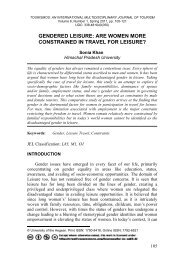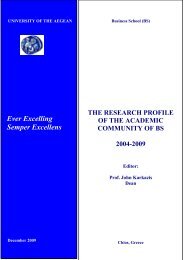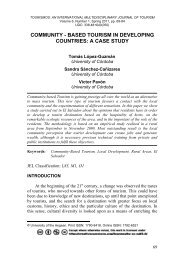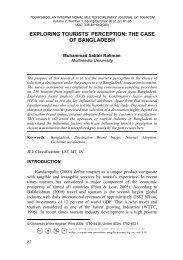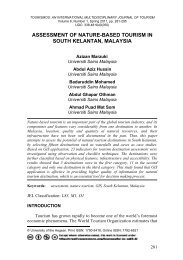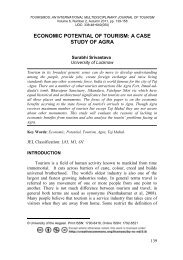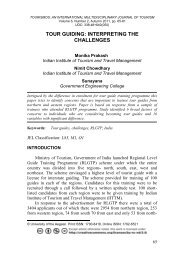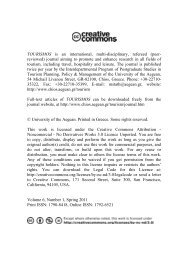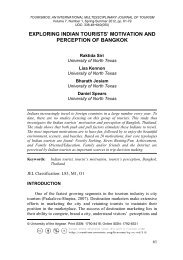COMMONS DEED
COMMONS DEED
COMMONS DEED
You also want an ePaper? Increase the reach of your titles
YUMPU automatically turns print PDFs into web optimized ePapers that Google loves.
Laura Parte Esteban, María Jesús Such Devesa & Pilar Alberca Oliver<br />
sum, this paper provides an initial approximation to earnings benchmarks<br />
in the Spanish tourist sector.<br />
The remainder of this paper is organized as follows. Section 2<br />
discusses prior literature. Section 3 describes the design of our empirical<br />
research and sample selection. Section 4 discusses the descriptive<br />
statistics and the findings of our empirical tests, and Section 5 concludes.<br />
LITERATURE REVIEW<br />
Background<br />
The earning quality around the world is still an open question.<br />
Market‟s regulators (such as Securities Exchange Commission) have<br />
expressed their concern about the reporting of financial information by<br />
firms due to their implication for global markets. Earnings are widely<br />
used as a key performance indicator of business success and stakeholders<br />
use earning figure to multiple purposes.<br />
This paper covers earnings benchmark as a measure of earnings<br />
quality in Spanish hotel industry. Frequency histogram is the most<br />
common methodology to identify weather managers trying to achieve<br />
earnings targets. Burgstahler and Dichev (1997) document a “kink” in the<br />
distribution of reported earnings around zero. They find a statistically<br />
small number of firms with small losses and a statistically large number<br />
of firms with small profits. Burgstahler and Dichev (1997) interpret this<br />
evidence as firms with unmanaged earnings just less than the heuristic<br />
target of zero intentionally manage earnings just enough to report a small<br />
profit.<br />
In the same way, small earnings increases (or avoiding small<br />
decreases in earnings) are considered as a proxy for earnings<br />
management. The hypothesis is based on the finding of a statistically<br />
unusual low number of firms with small decreases in earnings in relation<br />
to small increases in earnings. Similar predictions are considered for<br />
meeting or beating the analysts´ forecast.<br />
Findings of Burgstahler and Dichev (1997) have been documented<br />
using large samples of firms and selected under different restrictions. For<br />
example, in US context, Ayers et al. (2006) get some evidence consistent<br />
with an association between earnings management through the use of<br />
accruals and these targets. Kerstein and Rai (2007) and Jacob and<br />
Jorgensen (2007) find that the kink in earnings around zero is strongest in<br />
the fourth quarter. Donelson et al. (2009) provide direct evidence of an<br />
association between earnings management and discontinuities in the<br />
16



